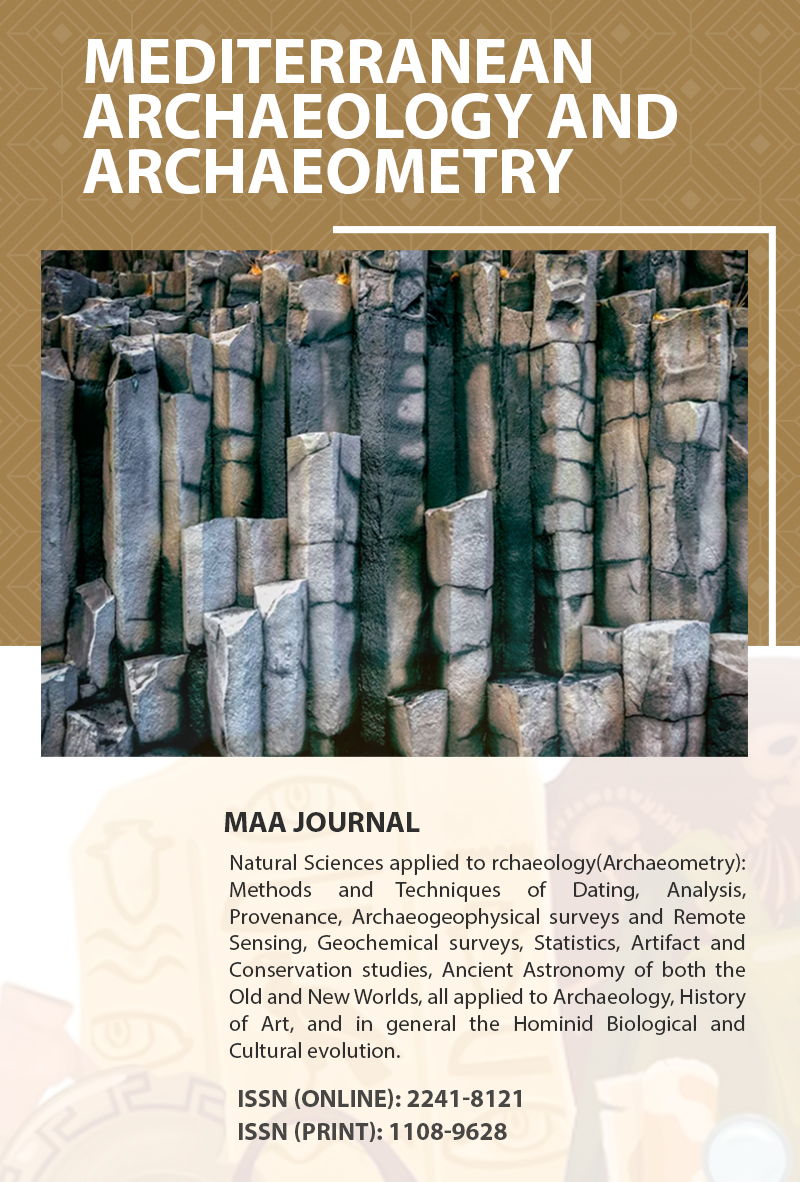PRELIMINARY PHYSICAL-CHEMICAL CHARACTERIZATION OF ARCHAEOLOGICAL METAL ARTIFACTS FROM POLICORO AREA (MATERA, SOUTHERN ITALY)
Keywords:
corrosion, biological deterioration, green protocols, Siris area, Southern Italy, Fibula, XRF, XPS, XRD, arrowheadAbstract
This study aimed to characterize seven metal artifacts found during archaeological excavations in the Siris area of Policoro (Matera, Southern Italy) dated during the five centuries BC. A range of analytical techniques, including optical microscopy (OM), X-ray fluorescence (XRF), X-ray diffraction (XRD), and X-ray photoelectron spectroscopy (XPS), were applied, and a microbiological investigation was performed. Visually, the metal finds appeared to be deteriorating from severe corrosion. The state of oxidation, evidenced through OM on the surface of a lead stick and an arrowhead, did not allow the recognition of the constituent materials, which were qualitatively obtained by XRF and, in the case of an arrowhead by XPS. On the other hand, the XRD technique was decisive in characterizing a lancet. The XRF application was only possible for a fibula, a flask cap, an iron weapon, and a javelin tip, which allowed the first characterization of these metal finds. The acquired information is crucial to evaluate a suitable green protocol in the study's second phase to recover and preserve these artifacts as better as possible.










